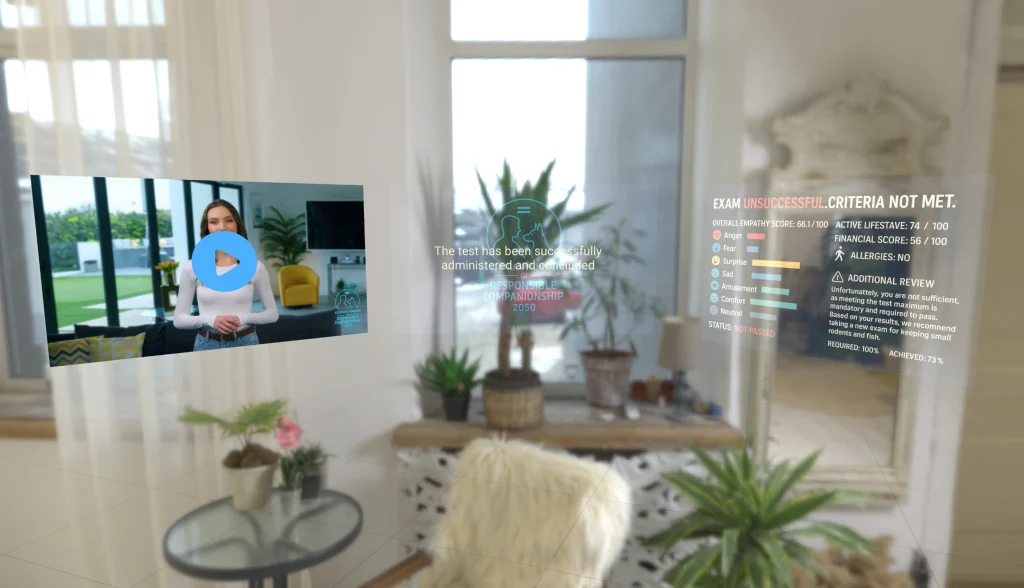Human-Animal Relationships in 2050 in Estonia
2025 | Speculative Design
I looked into human-animal relationships in year 2000, 2025 and based on detected trends created a narrative of what they might be like in 2050. The design outcome of the project was the user journey of getting a pet in Estonia in 2050 and the final results of an AR pet owner exam.
Team
Paula Maria Mengel
Laura Sööt
Teele Kiisk
Daria Titova
Anna Elisabeth Remmelg
My Role:
Research – desk research, interviews, observation
Creating a future narrative
Creating a wireframe

Stage
Initial Brief
Our initial assignment was to investigate the relationships between humans and animals in the environmental and socio-political context of Estonia. During the course, we had to explore and critically analyze the responsibilities, contradictions, and opportunities associated with future human-animal relationships – all based on research.
More About the Process
Desk Research
We began by exploring the following human-animal relationships related topics:
- Anthropomorphism, attributing human characteristics and roles to animals;
- Animals in unnatural environments – for example, keeping wild animals as pets indoors;
- Animals with a job – carrier pigeons and police dogs;
- Estonian laws related to animals;
- Veterinary medicine – making health decisions for animals.
The first trend we noticed was rising suspicion about how easy it is to get a pet here. Animal rights activists are writing articles about how selling animals in stores is unethical. There are also underground breeders in Estonia who freely sell animals to anyone.
Secondly, we noticed that animals are often adopted impulsively, without properly considering the responsibilities and obligations that come with it. A good example of this on a global scale is how in August 2020, one in four UK citizens adopted a pet to entertain themselves during the pandemic. It turned out that most of them did not know exactly what to expect, and this led to a situation where over 40 pets were abandoned every day.
Based on this, we began to study animal autonomy – could it be that in the future, as we know more about animal consciousness and behavioral patterns, they will have a greater say in their domestication and also in medical decisions?
Observation
We visited the DEPO store in Tallinn, where it is still possible to buy a pet, to find out what conditions the animals live in and how they are purchased.
We noticed that animals were treated more like material products – for example, there was a sign near the cages saying that the “product samples” were not secured securely enough to leave children unattended. We had the opportunity to see a hamster being sold: it was placed in a small, empty cardboard box that was then taped shut. The buyers were not given any advice on how to care for the hamster.
We also observed the reactions of passing people to the animals' living conditions and took lots of notes. I noticed that many pointed out the poor conditions, but when children did so, their parents comforted them and assured them that such tiny animals didn't need more space.


Interviews
In contrast, the communications manager of Varjupaikade MTÜ told us in an interview how they try to “scare away” shelter visitors by talking about vet prices and the responsibilities that come with adopting an animal, in order to sort out the owners who really care.
We learned that most often when an animal is returned to them, the reason is either the discovery that the animal's personality does not match with the owner's, or unexpected allergies emerging.
Estonian laws and regulations related to the adoption process are becoming increasingly strict, and Varjupaikade MTÜ hopes and believes that this will continue to be the case.
We also interviewed a person offering foster care through Pesaleidja, a network of pet foster homes, who said that finding new owners is done very carefully and they are selected individually and carefully to ensure that the animals are well cared for.
STEEP+V Analysis
We looked at human-animal relationships in the context of the years 2000, 2025, and 2050 in the following areas:
S – Society
T – Technology
E – Economy
E – Environment
P – Politics
V – Values
The most important conclusions we reached with the help of this method:
- Adopting a pet is slowly but steadily becoming more difficult. Laws are gradually becoming stricter and adopting an animal is increasingly regulated.
- Current trends indicate that in the future, social media platforms may exist that make it easier to match people up with animals that match their personality and lifestyle.
- Given our expanding knowledge of animal consciousness, animals will have more rights in the future than they do now and will be allowed greater autonomy as domestic animals.
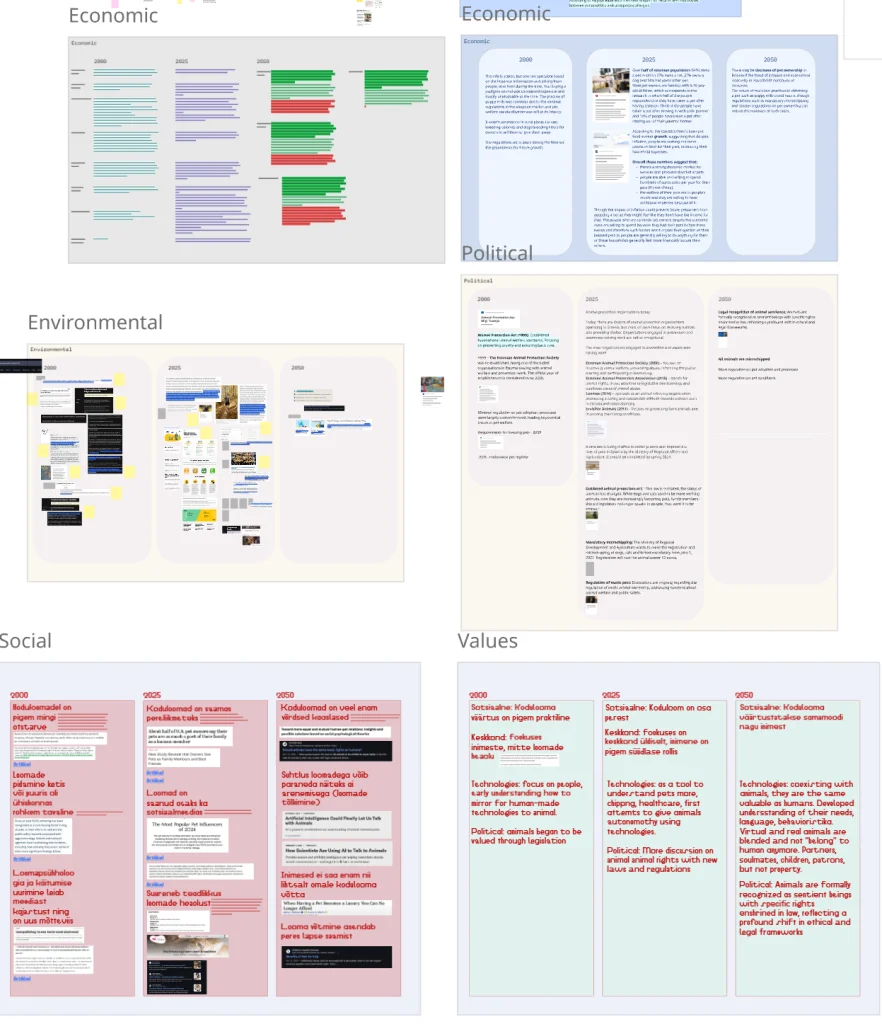
Defining Our Focus
Based on the findings of the study, we decided to focus on matching owners up with animals that fit their personality and lifestyle, in order to prevent animal abuse, abandonment, and pets getting returned to shelters.
Based on current trends, despite being living beings, pets are often chosen for aesthetic and entertainment reasons, which leads to situations where the owner does not care for the pet according to the pet's needs. Considering the continuous strictening of laws, we speculate that by 2050, people will be trying out ways to solve this problem.
What-if question
Based on our focus, we set out to find our what-if question. We tossed around several options for a while until we arrived at a combination that was provocative and realistic enough to move forward with.
“What if regulations of getting a pet would become stricter to guarantee compatibility between pets and owners to avoid abandonment and abuse?”

Creating a narrative
Looking at our what-if question we started to think about what that kind of a future would be like. We used the Futures Wheel method to brainstorm ideas, meaning we started to gather ideas of what the consequences of our what-if scenario could be.
Some interesting thoughts emerged:
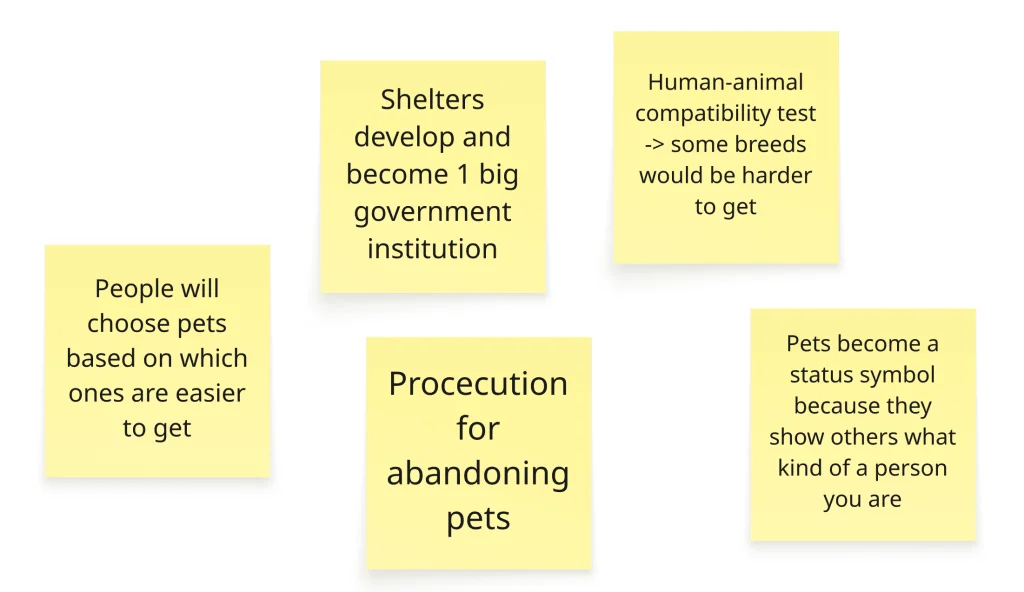
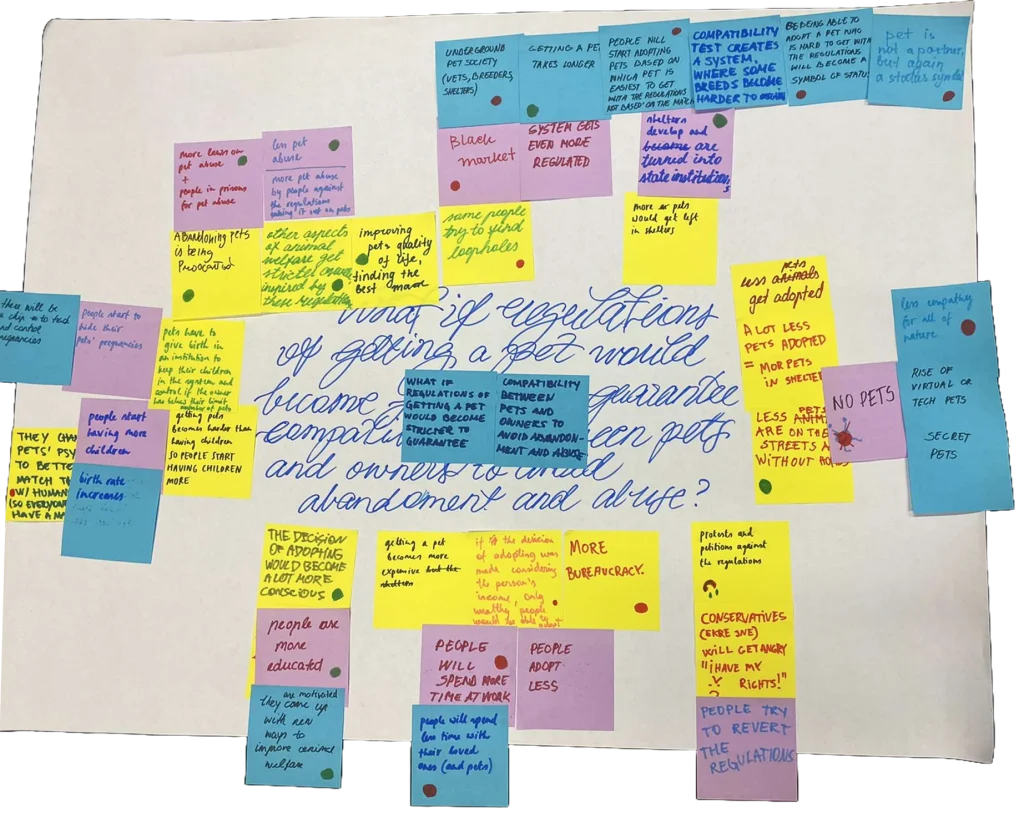
A world where you need a license to own a pet
We reached a narrative that in 2050, it may be the case that a license will be required to own a pet.
In our future world, adopting a pet requires taking a long and expensive course, during which you will learn about a specific species and breed, how to care for the pet, how to provide first aid, how to feed it, and support it in every way necessary.
The course culminates in a two-part exam in augmented reality:
- The part takes place in the examinee's home environment. In augmented reality, the desired animal appears in the room and various more and less stressful situations are simulated.
- The second part takes place outdoors, where the examinee must also handle the animal in various simulated situations.
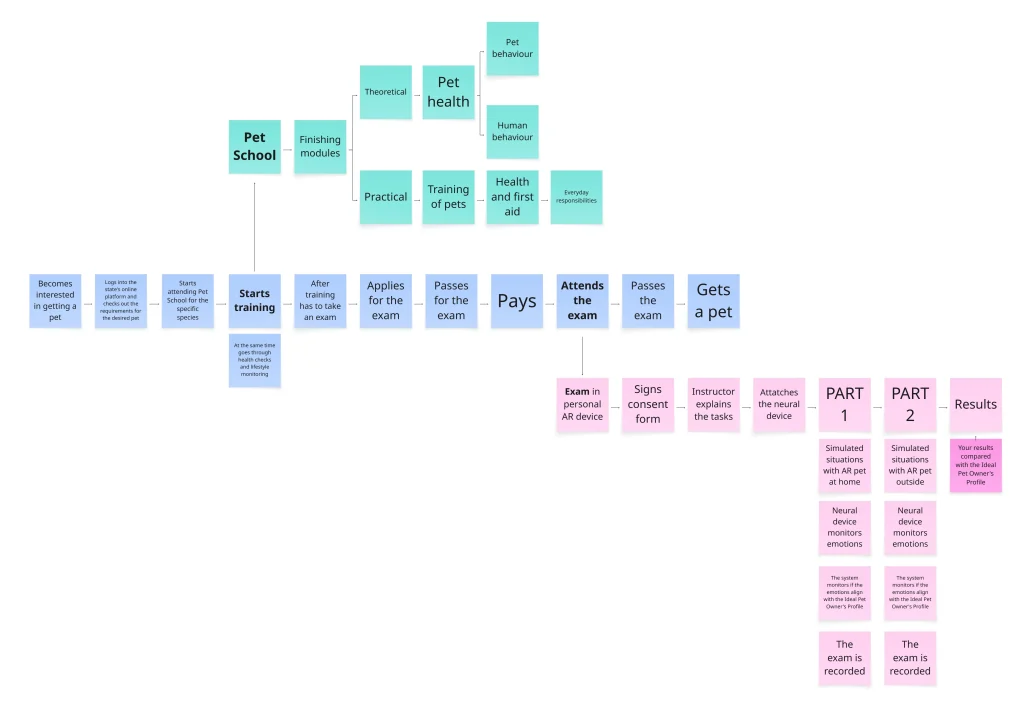
Result
At the end of the project, we presented the following future artefacts at our end-of-course exhibition:
- A view of what will be displayed at the end of the exam, designed in a virtual reality environment;
- AI-generated instructions and results videos of the examiner appearing in front of the examinee at the beginning and end of the exam;
- Exam results view.
